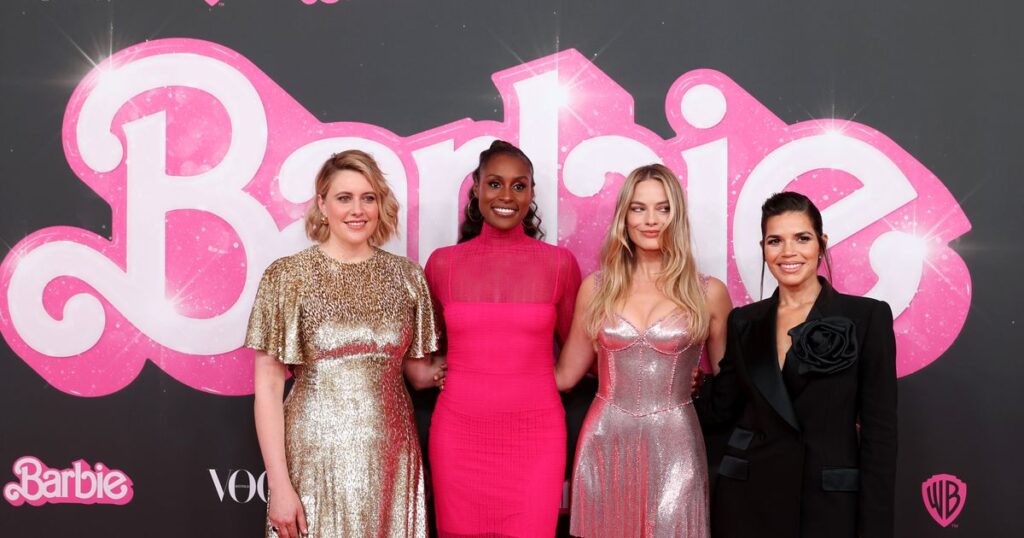As former President Donald Trump and his base dial up the racism and sexism against presumptive Democratic presidential nominee Kamala Harris, it should come as no surprise that there’s an “epidemic of invisibility” for women of color on screen, according to a new report published Monday.
In 2023, of the top 100 highest-earning movies at the box office, just 14 featured women of color as leads or co-leads, down from 18 in 2022. Behind the camera, only four women of color directed major Hollywood movies last year.
The entertainment industry’s persistent intransigence on racial and gender equity is a perennial finding of the University of Southern California’s Annenberg Inclusion Initiative, which has annually examined diversity in front of and behind the camera since 2007. The group’s latest report warns that this abysmal cycle is likely to continue as Hollywood companies roll back their previously lauded diversity initiatives, cut costs and prioritize risk-averse choices — despite mountains of research showing that diversity is essential to Hollywood’s survival.
The success of “Barbie” was only a blip. In 2023, fewer women were leads or co-leads in the top 100 box office movies than in the previous five years, according to the Annenberg Inclusion Initiative’s data. Overall, just over 30% of all speaking characters in 2023’s major films were women or girls, a number that has virtually not changed in 17 years.
“It is clear that there is either a dismissal of women as an audience for more than one or two films per year, a refusal to find ways to create meaningful change, or both,” founder Stacy L. Smith said in a statement accompanying the report. “If the industry wants to survive its current moment, it must examine its failure to employ half the population on screen.”

Don Arnold via Getty Images
The report lays out in stark terms why women of color, in particular, face an “epidemic of invisibility” on screen. According to the group’s data, 99 of the top 100 films in 2023 did not feature a single Native or Pacific Islander woman. 81 failed to include any Middle Eastern/North African women, 62 had no Latinas, 56 had no multiracial or multiethnic women, 49 had no Asian women, and 39 had no Black women. By contrast, white women were plenty represented: They were absent from only 12 of the top 100 movies at the box office.
The report also found dismal records for queer and disabled characters on screen in 2023. Just 1.2% of characters in the year’s top 100 films identified as queer. Of the 100 top-grossing films, 76 featured zero queer characters. Only four speaking characters identified as nonbinary. In 2023, there were zero trans characters on screen in major Hollywood films.
For disability representation, just 2.2% of all speaking characters in 2023’s top films were shown with a disability, a percentage that has not improved over the last decade. When a character was portrayed with a disability, that character tended to be a white man. Nearly two-thirds of disabled characters had a physical disability, minimizing people with less visible disabilities. Of the 100 top films in 2023, 42 featured zero disabled characters.
Year after year, research on Hollywood has underscored how representation behind the camera is crucial to seeing more nuanced representation in front of the camera. Last year was no different: Films directed by women were far more likely to have female lead or co-lead characters (75%) compared to films that men directed (22.2%). But only 12% of 2023’s major films were directed by women, a number that hasn’t budged in recent years despite executives’ promises to hire more women as directors.
“At a time of industry contraction and uncertainty, it is clear that the film industry has reverted to a decision-making process that relies on what has worked in the past.”
– Annenberg Inclusion Initiative
There’s also a severe lack of career longevity, particularly for women of color. Across the group’s 17 years of data, only 32 women of color have directed one of the year’s 100 highest-grossing movies. Just seven women of color have directed two or more top films.
The report features its customary set of recommendations, such as industry stakeholders setting inclusion goals and measuring progress over time, as well as changing entrenched systems of hiring and decision-making. However, “given the lack of improvement and in some cases the reversal of progress noted in this study, it is clear these recommendations have been heeded little, if at all,” the researchers wrote in the report.
“At a time of industry contraction and uncertainty, it is clear that the film industry has reverted to a decision-making process that relies on what has worked in the past,” they continued. “However, the industry must recognize that what ‘worked’ in the past was also exclusionary, discriminatory, and catered to the whims of a majority audience that no longer exists.”
